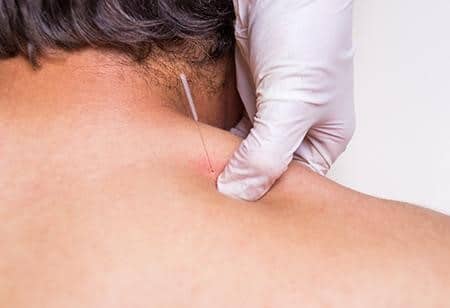This week on the Atlas Total Health Blog, we wanted to highlight a very popular and helpful treatment option called Dry Needling. Many people have come to our offices asking about this service so we wanted to go over some helpful tips about this particular therapy.
SPECIAL NOTE: This service is offered at our Tennessee based Atlas Total Health clinics. Dry needling is not available at our Georgia locations.

5/24/2023
By: Alex Earl, DC
Spine Care Specialist
Do you have a tight muscle in your neck, shoulder or low back?
If so, you could be a candidate for myofascial dry needling treatments. Now, dry needling is oftentimes associated with acupuncture, so today’s article is specifically written to help clear the air on the similarities between the two treatments (and the key differences).
Dry needling is a therapeutic technique used by healthcare professionals, including chiropractors, to manage musculoskeletal pain, particularly in the neck, shoulder, and back areas. It involves inserting fine needles into tender points or tight bands of muscle to alleviate pain and improve muscle function. Here are a few ways in which dry needling might work and its potential benefits.
Neurophysiological Effects
Dry needling stimulates sensory nerves, which can lead to various responses in the body. It can promote the release of natural pain-relieving chemicals like endorphins and reduce the transmission of pain signals to the brain.
Another component that is frequently associated with dry needling is the concept of “trigger points”. While the jury is still out on the exact diagnostic criteria for identifying trigger points, it is fair to label what we feel in our tight muscles as “tender spots”. Tender spots are hyperirritable knots or areas within muscles that can cause referred pain and restricted movement.
Dry needling targets these points, causing them to release and relax. This process can improve muscle flexibility and decrease muscle tension. Once this muscular tension has reduced, patients can move more freely through their restricted joints, especially in the neck and low back. This provides a wonderful “window of opportunity” to then apply a chiropractic adjustment to the area for maximal therapeutic effects!
Improved Blood Flow
Another interesting aspect of dry needling is through a mechanism called the “Damage effect”. Whereby, we are induced an injury underneath the skin when the needle punctures the superficial layers. This injury causes a small injury, which stimulates nitric oxide and, as a result, new blood flow into the area to heal the damaged cells (from the needle).
Inserting needles into specific areas can increase blood circulation to the affected muscles. Enhanced blood flow brings oxygen and nutrients to the tissues while removing waste products, facilitating healing and reducing inflammation.
Muscle Relaxation
By far, the most common response to dry needling treatment is the reduction in muscle tightness. The insertion of needles can help relax overactive muscles by interrupting the neural feedback loop between the muscle and the central nervous system. It can help reduce muscle spasms, ease muscle tightness, and restore normal muscle function.
Similarities to Acupuncture
Both acupuncture and dry needling use a solid, filiform needle. The reason it is called “dry needling” is because there is no possible method of transmitting a substance either into or out of the body. When you get your blood drawn, for example, blood is able to transfer from you through the needle, therefore, it is called a “wet needle”.
We can use the calculator analogy to explain the similarities: both accountants and actuaries use a calculator.
Additionally, both acupuncture and dry needling place the needle in local tender spots. In fact, researchers have looked at the location of commonly found tender spots and analyzed their location to acupuncture points. They found that a shockingly large percentage of tender points overlay the exact acupuncture points found in the body.
Differences to Acupuncture
There are two significant differences between acupuncture and dry needling.
1. The Intent of the practitioner
If your provider’s intent is to treat a localized tender spot of muscle, then they are most likely doing dry needling.
An example of this would be when the practitioner needles the upper trapezius muscle in a patient who has headaches.
If your provider’s intent is to treat a global strategy to improve a specific illness or condition, then they are most likely doing acupuncture.
An example of this would be when the practitioner needles the hand, skull, ear and calf muscle for headaches.
2. Total Treatment Time
Probably the biggest difference between acupuncture and dry needling is total treatment time. Acupuncture could involve 30-45 minutes of global needling, moxibustion, and some other forms of manual therapy.
Dry Needling might last a maximum of 2-3 minutes.
It’s important to note that dry needling should be performed by a trained and licensed healthcare professional, such as a chiropractor, who has expertise in the technique and a comprehensive understanding of musculoskeletal conditions. Each patient’s condition should be evaluated individually to determine if dry needling is appropriate and to develop a personalized treatment plan.
Real Life Case Study: “Dry Needling helped my headaches!”
Recently, one of our patients came to our Fort Oglethorpe office with headaches. She was really suffering and we discussed how dry needling might be an option for her long-term recovery. Since we can’t do dry needling in Georgia, we got her scheduled with our East Ridge, Tennessee office, where she was able to get almost immediate relief.
After helping this patient overcome her headaches, by using a combination of chiropractic care and dry needling, this patient was able to continue playing with her grandkids. The headaches were interfering with her ability to play with her grandkids, which was really important as school ends and she helps take care of them during the summer months!
Do this next!
Question & Closing paragraph
- Share this Article with a Friend or Family member who currently has headaches, neck pain, shoulder pain and/or low back pain!
- Call our office TODAY at (866) 668-0108 to book your next appointment!
- Keep an eye out for next week’s article!


